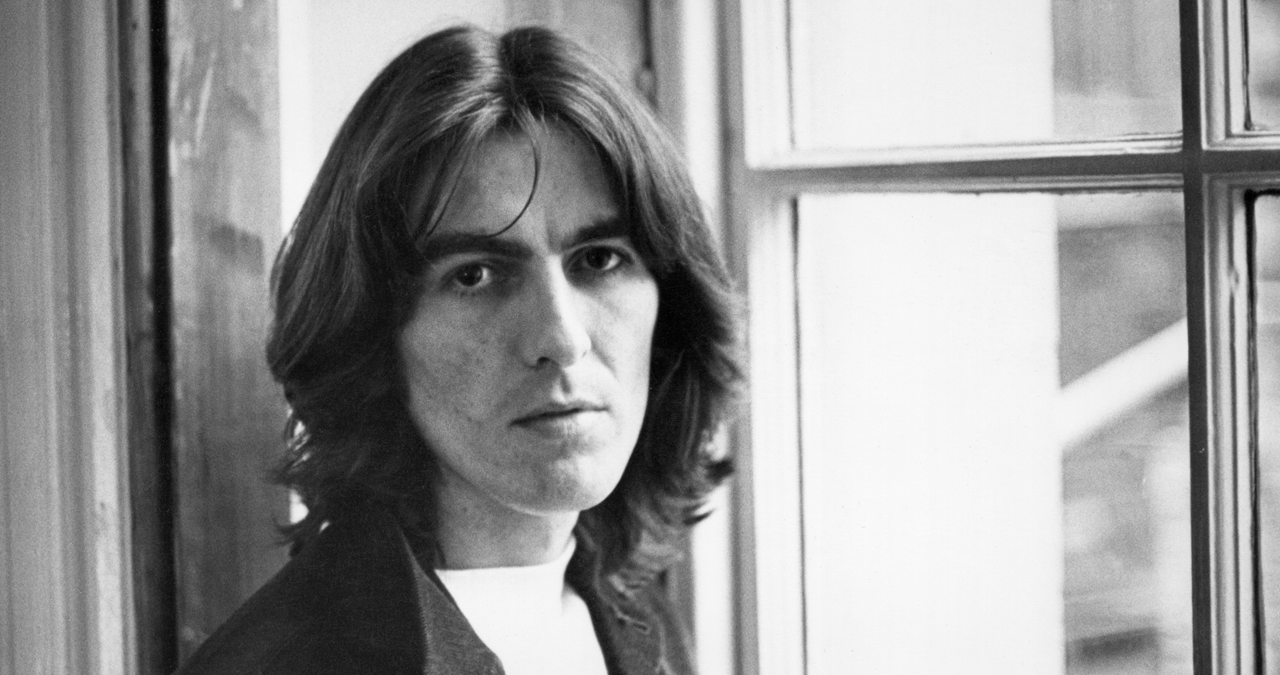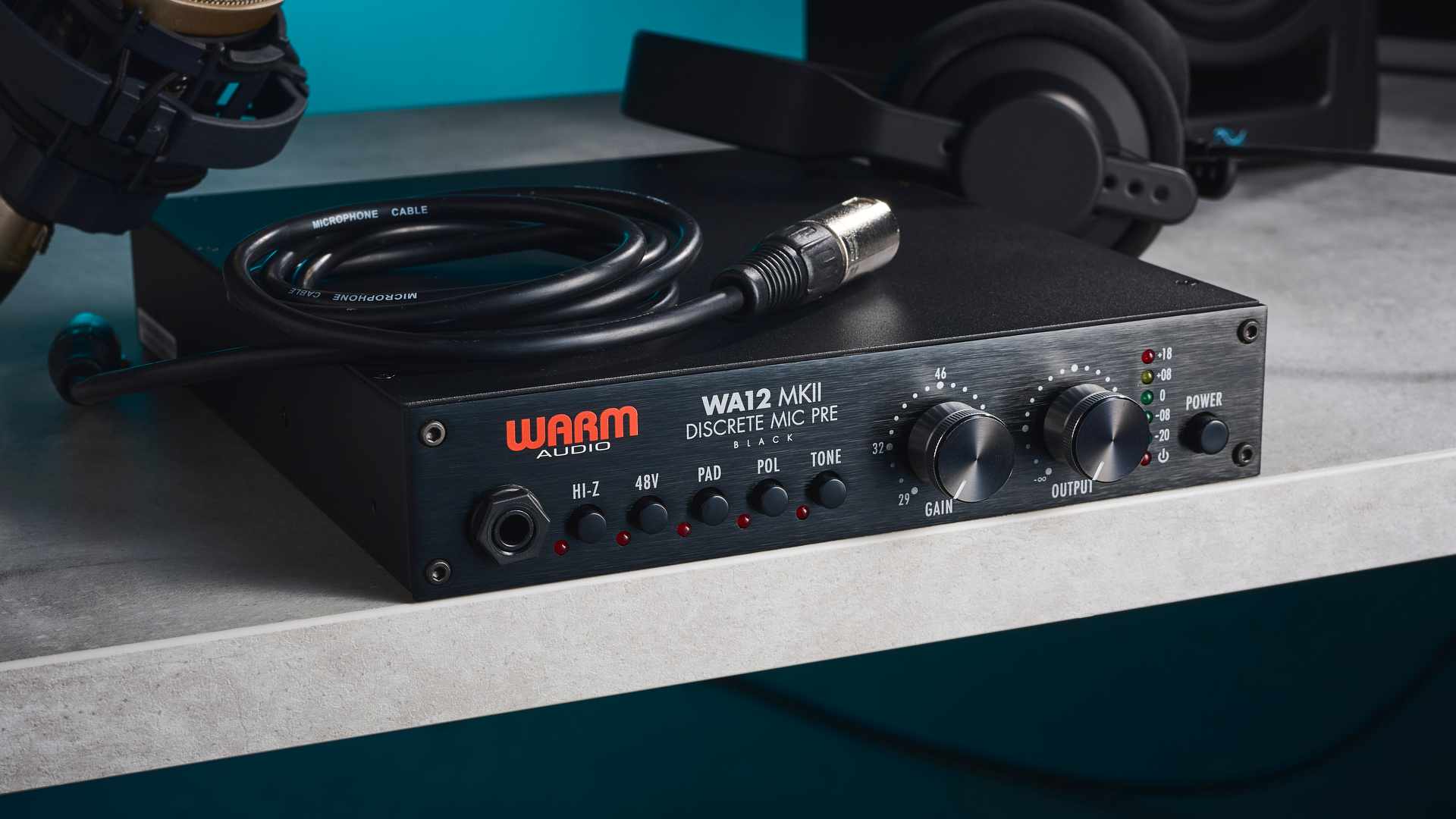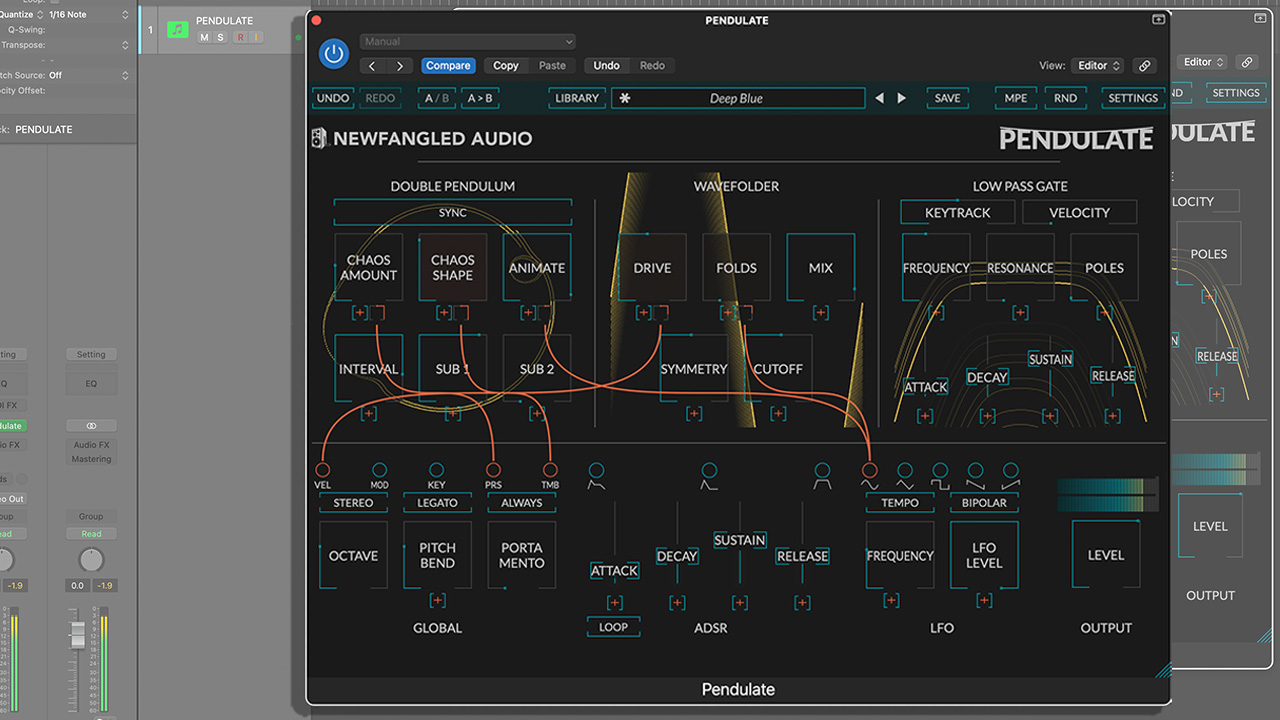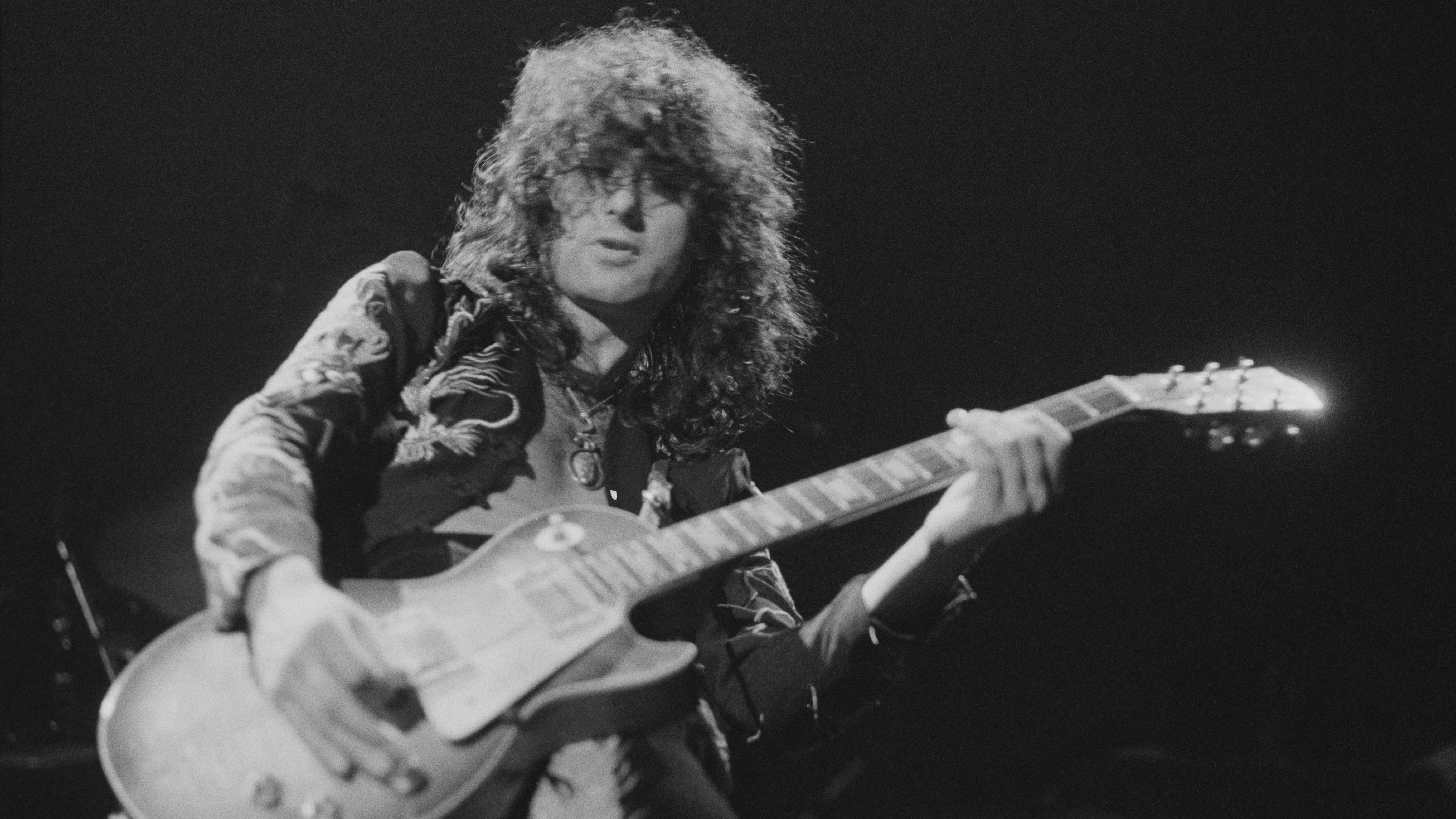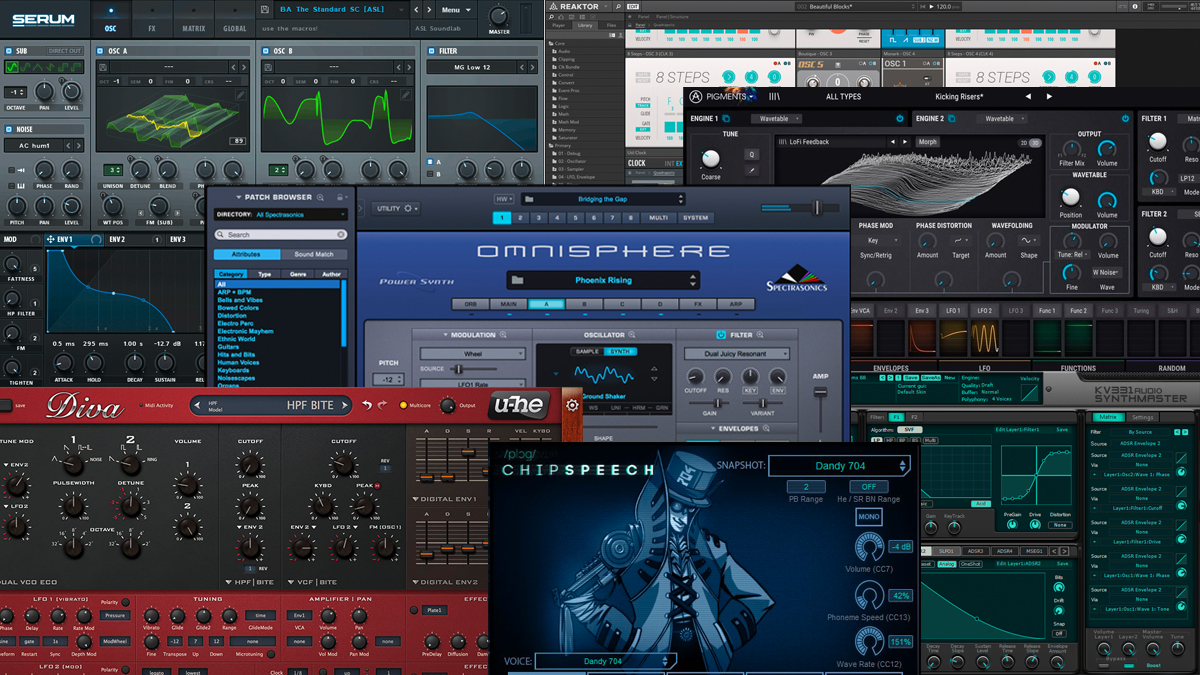Fantastic (free) plugins and how to use them: Full Bucket FB-3300
Classic synthesizer plugins offer a great entry point for unusual and rare synth designs, and this Korg design is one of the rarest
Revisiting classic synth designs is a common pathway for both hardware and software designers, and is testament to how popular many classic designs remain. However, in the software realm it also provides a realistic and affordable way to make available expensive or scarce designs.
With the imminent arrival of Korg’s PS-3300 hardware reissue, we thought we’d take a look at this rather excellent (and free) software version.
Download Full Bucket Music's FB-3300
FB-3300 from developer Full Bucket Music is a faithful recreation of this 1970s analogue polyphonic synth, and makes available a design that in hardware form was limited to around 50 units.
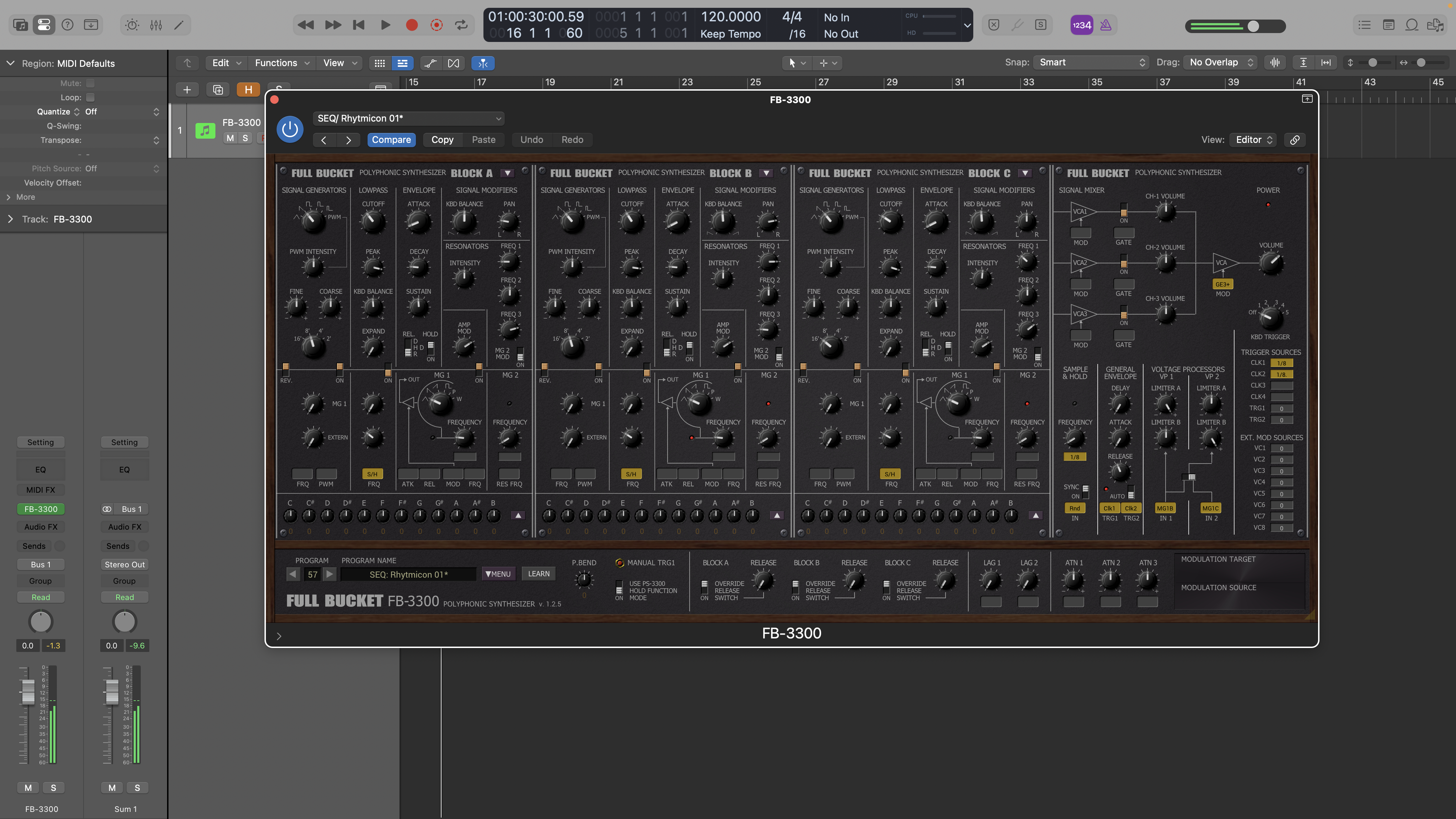
The original design combines three Korg PS-3100 units to deliver a rich, lush sound and was popular with users including Jean-Michel Jarre, Kraftwerk and Aphex Twin. The same physical layout is used in the FB-3300 so if you encounter the original or hardware reissue you’ll be well primed.
Exploring the FB-3300
Full Bucket FB-3300 (VST, VST3, AU, AAX, CLAP) is a semi-modular subtractive synthesizer instrument.
It comprises 3 identical polyphonic sound generation modules - Block A, Block B and Block C - each with an oscillator (signal generator), low pass filter, 2 modulation generators (LFOs), 3 band pass resonators, amplitude modulation, amplitude envelope and pan control (this is a software addition).
Get the MusicRadar Newsletter
Want all the hottest music and gear news, reviews, deals, features and more, direct to your inbox? Sign up here.
These then connect to the output module on the right hand side where you can balance their levels using the signal mixer. In addition to hard wired modulations, each module includes patch points with drop down menus for connecting additional modulation sources to targets.
These replicate the patch cable system of the original hardware. In keeping with the original design there is no velocity, however there is Keyboard Balance, which tilts the note volume towards higher or lower notes, depending on which way you turn it.
The same feature is available for the low pass filter, and this tilts the filter cut off accordingly.
Further options include global modulators - Sample & Hold, General Envelope and Voltage Processors, as well as software additions in the form of 3 Attenuators and 2 signal smoothing LAG processors.
Meanwhile MIDI CC assignment is available via the Learn button. Further patch and global options such as plugin window size can be found via the Menu button, and if you need to refer to any functional details, there is also an excellent manual.
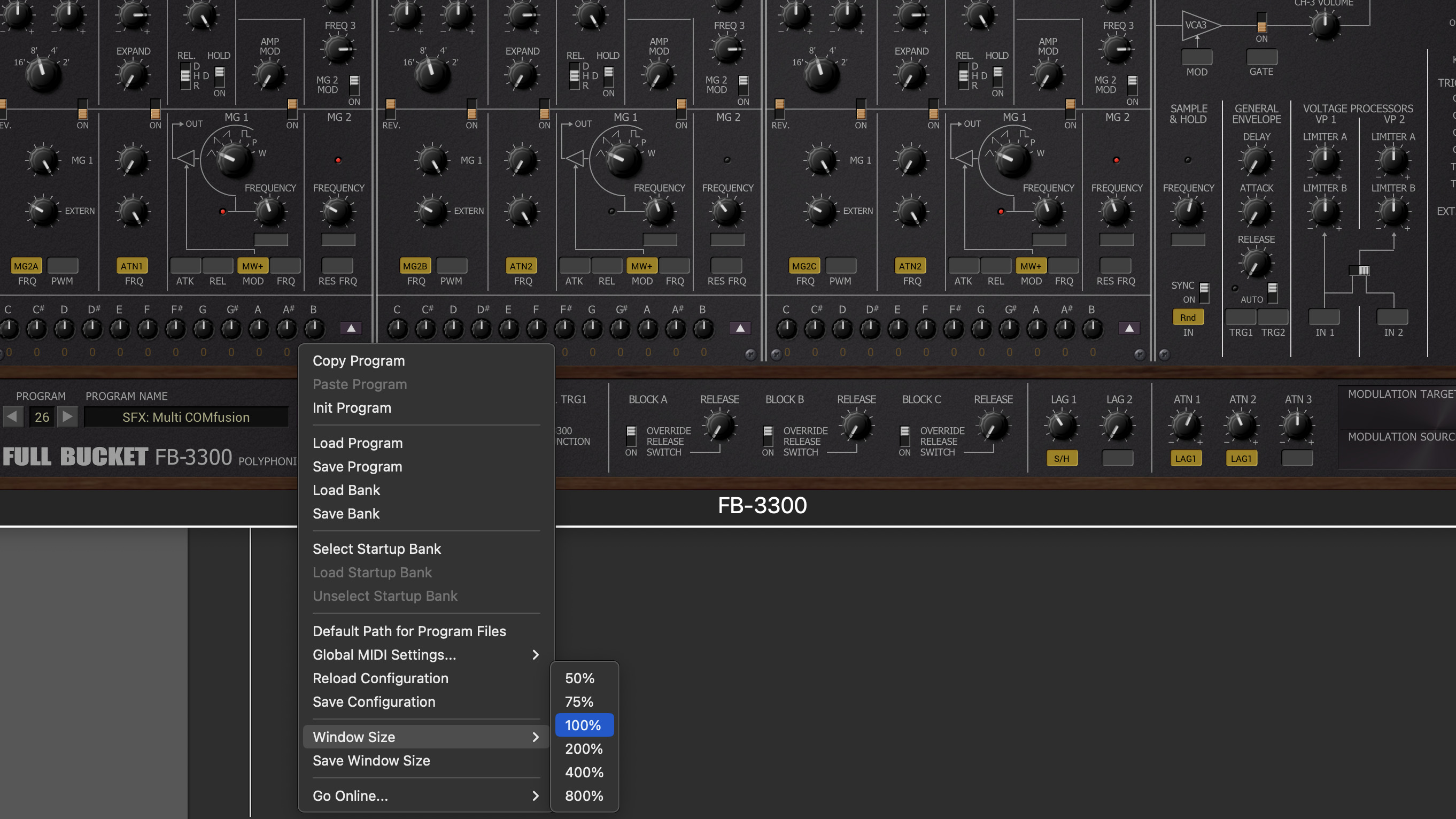
To get started creating a patch let’s look at a single module - Block A. Start by initialising the preset - you can do this via the dropdown preset Menu in the bottom left.
Now play a note and you’ll hear all 3 blocks playing. Turn down Blocks B and C so you can hear just Block A. Looking at the Signal Generator section, you’ll see there’s a choice of 6 waveforms with a 4 octave range, and course and fine tuning adjustment.
There’s pulse width modulation, which uses modulation generator 2 (MG2) and has its own Intensity control, meanwhile frequency modulation uses MG1. Both can be assigned external sources at the bottom.
Try connecting a modulation generator from a different module - here we’ve connected Block B’s MG2 to frequency modulate Block A’s oscillator.
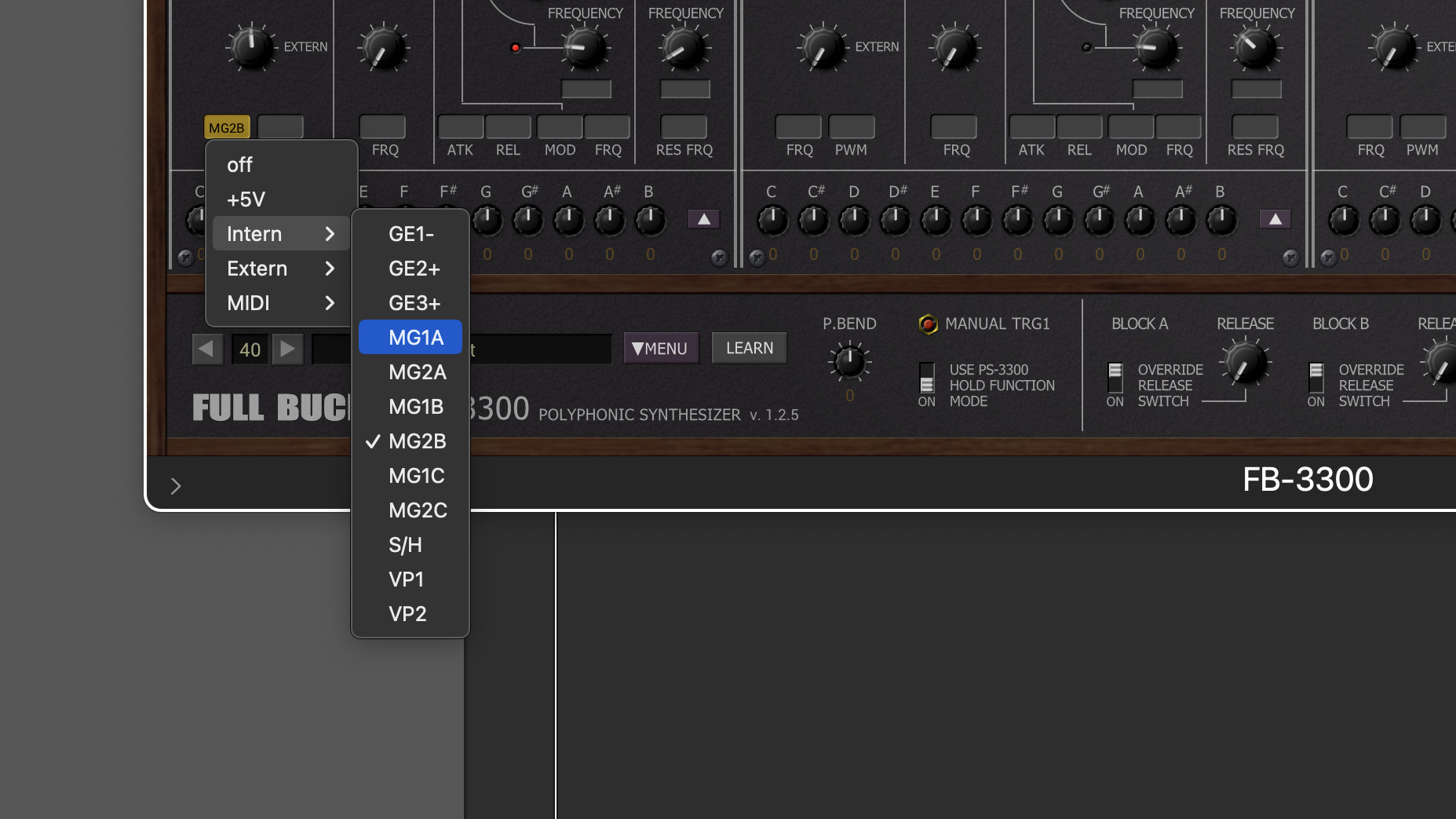
The low pass filter is a 2-pole resonant design based on Korg’s K-35 filter. As mentioned you can use the Keyboard Balance to control how note pitch affects the cutoff, meanwhile the Expand control is a depth setting for Block A’s Envelope.
If you want to use other sources to control the filter frequency, activate the section below. The upper knob is hard wired to MG1 and the lower knob is for the patch point below.
Each block includes an ADSR envelope. This is reasonably self explanatory, however much like the hardware, the release stage has 3 fixed options - short (D), medium (HD) and long (R). You also have the original Hold option.
This only works when the Attack is above about 70% and requires a second key press to activate the release stage. Thankfully this option can be switched off.
What’s more the FB-3300 also improves on the original by providing a fully controllable release time, which you can activate and set in the bottom parameter bar. For additional modulation, attack and release patch points are available at the bottom.
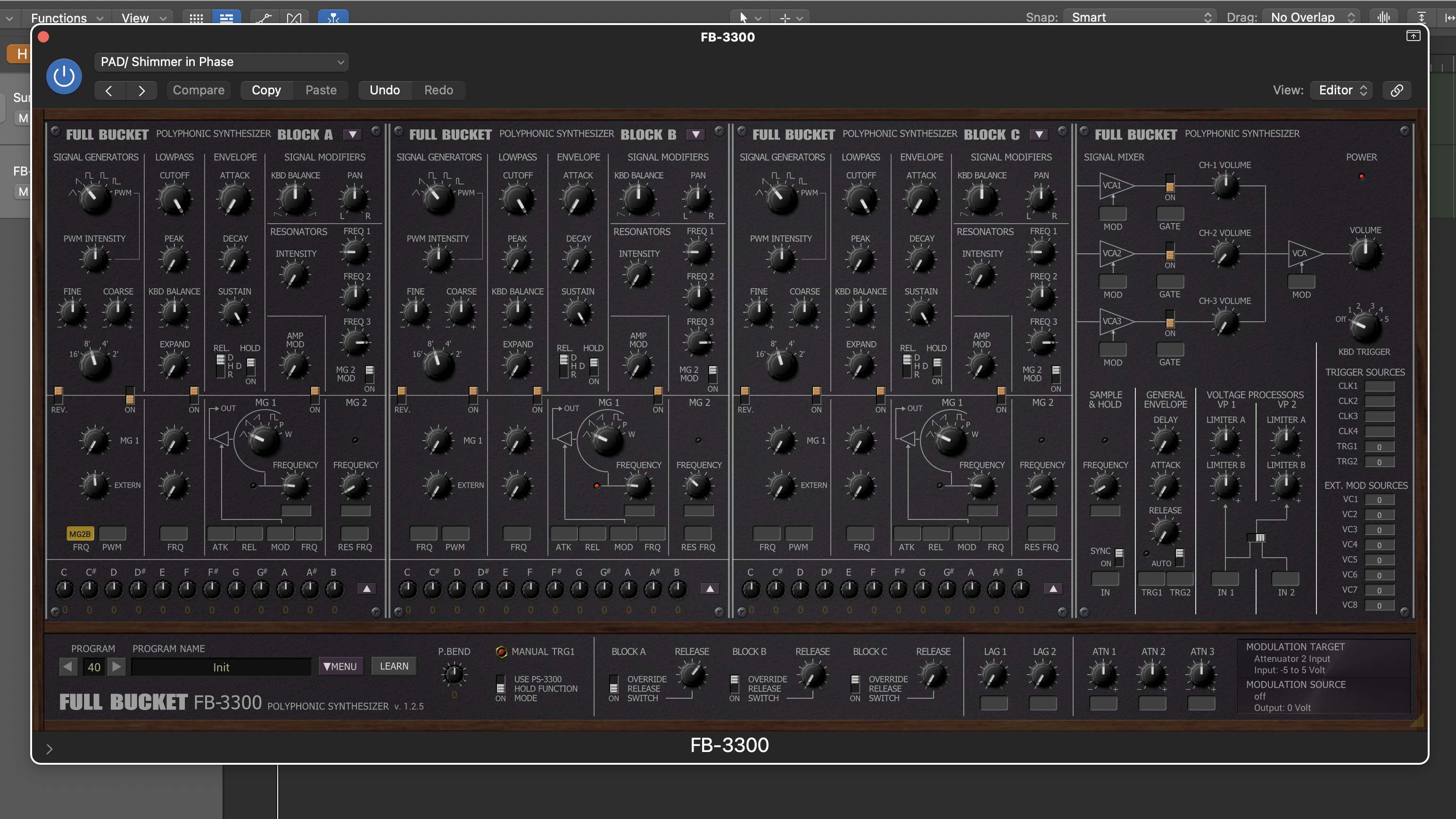
We’ve already mentioned the modulation generators, and these are like Block specific LFOs. MG1 is the most flexible, and includes 4 oscillator shapes, and rather unusually also includes white and pink noise.
It also has an impressive top frequency of 1.6kHz. Meanwhile MG2 is simpler with a triangle shape. Both can be synced to DAW host tempo using the drop down menu.
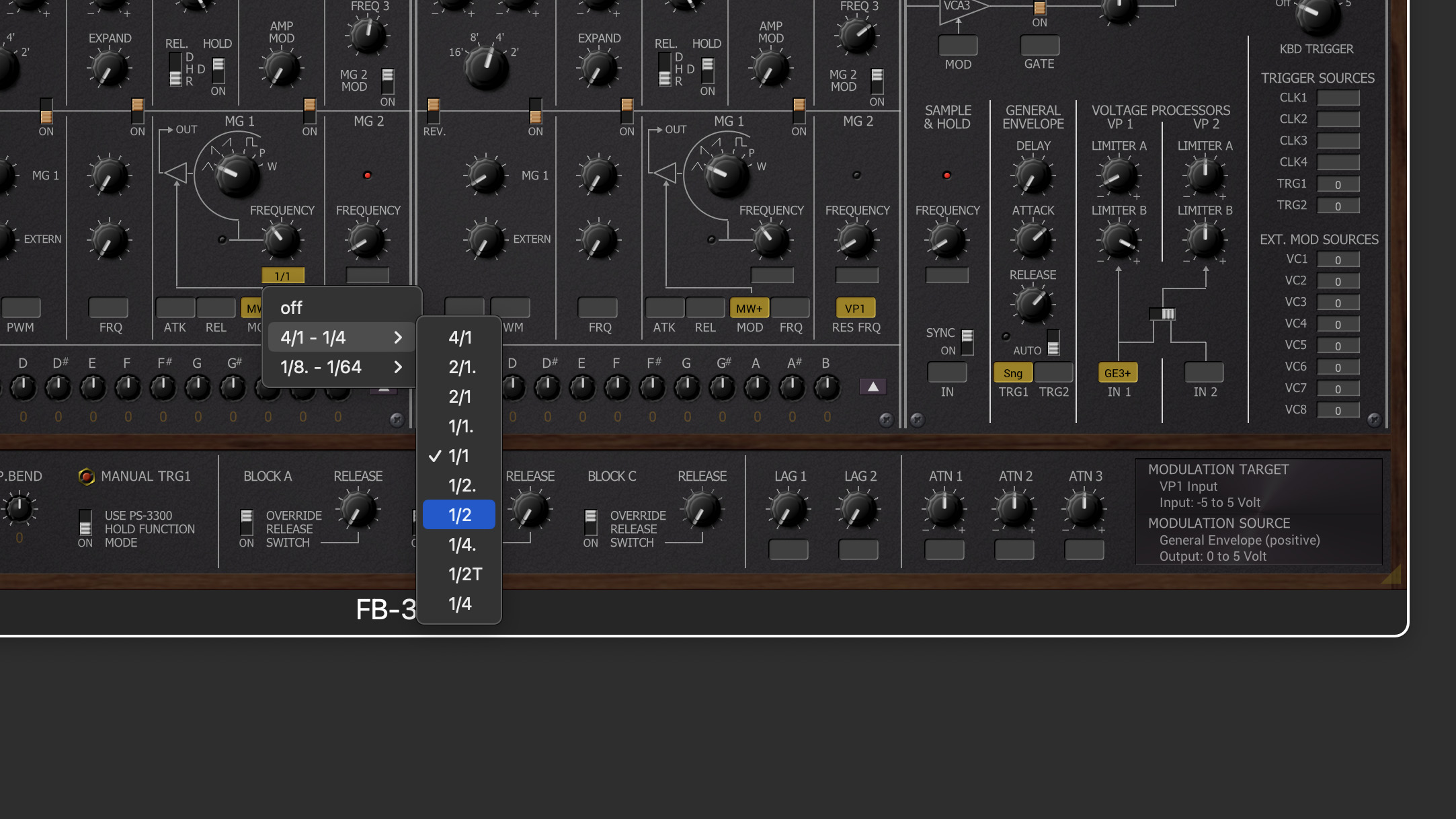
Good stuff
Having looked at the features in a single Block, it’s easy to see how when you multiply this by 3 and factor in cross modulation between the Blocks, this architecture can achieve sumptuous rich sounds. What’s more, with block copying from the menu at the top right, it’s easy to duplicate and tweak blocks. Nevertheless, there are a couple of rather interesting features that add further interest to the FB-3300’s sound palette.
First up, Resonators. These are one of the recognisable features of the Korg PS design and work as follows. The output signal from a Block passes through 3 parallel bandpass filters with high Q.
Each has an adjustable centre frequency, meanwhile a signal Intensity control sets the overall mix blend. This static configuration can then be modulated using MG2 or via the Res Frq patch point. Try a slow synced setting on MG2 to create rich evolving textures.
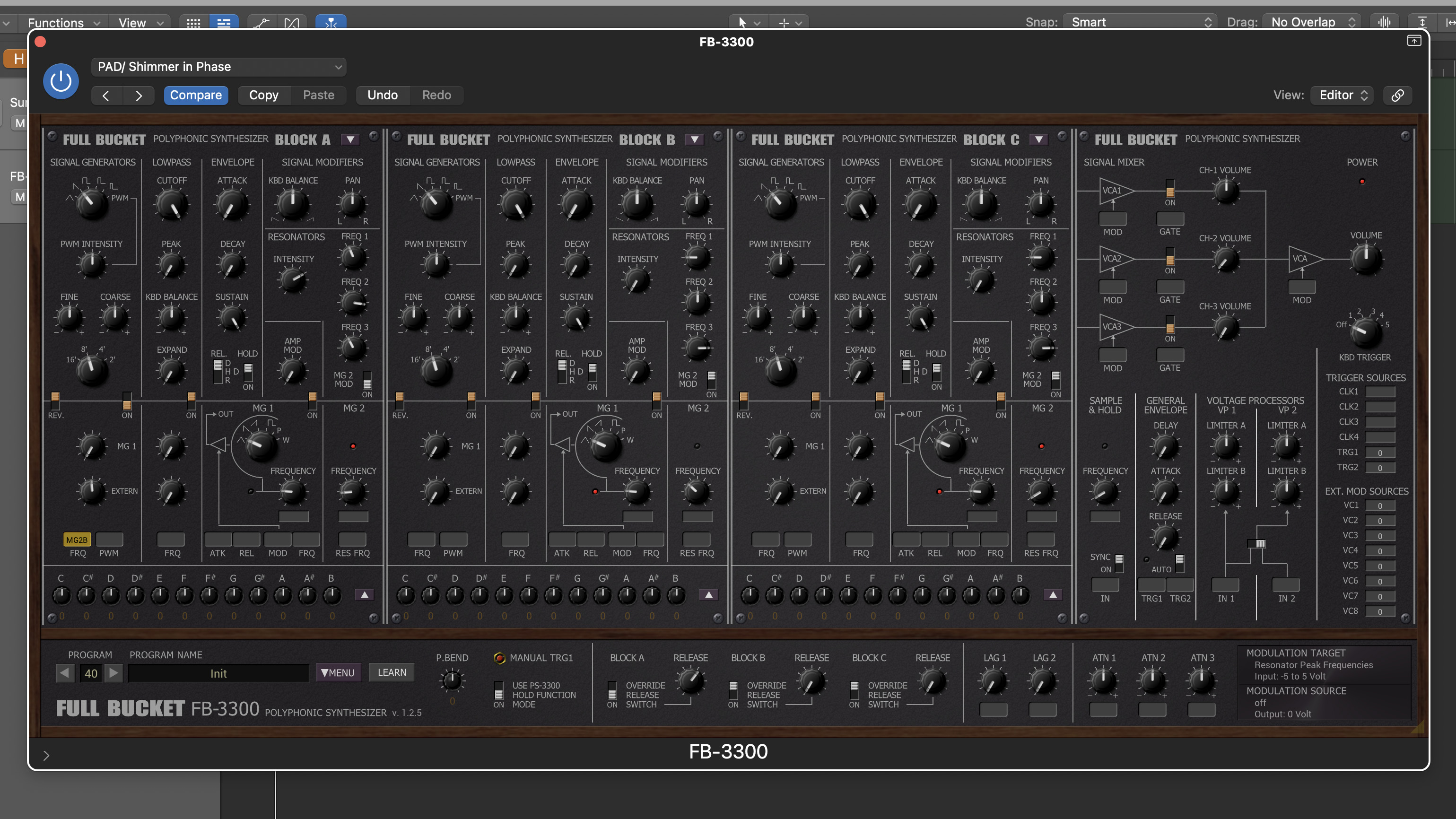
Next up, tuning. Korg’s PS-3300 design includes individual per note tuning, and because it uses frequency division for lower octaves, one set of 12 controls can set up bespoke micro tuning scales for each Block.
This is fully replicated in FB-3300 and enhanced with a choice of preset scale tunings. It’s a highly flexible and slightly odd feature that can be used in a number of different ways.
For example, try setting a note offset slightly differently for each Block - here we’ve offset note D. If we replicate this across all notes it creates a unison style effect. Alternatively, set up a bespoke scale.
For ideas, check out some of the presets from the menu. Here we’ve selected the Pythagorean option, which is quite close to concert pitch. For more exaggerated sounds try the Wendy Carlos Harmonic scale.
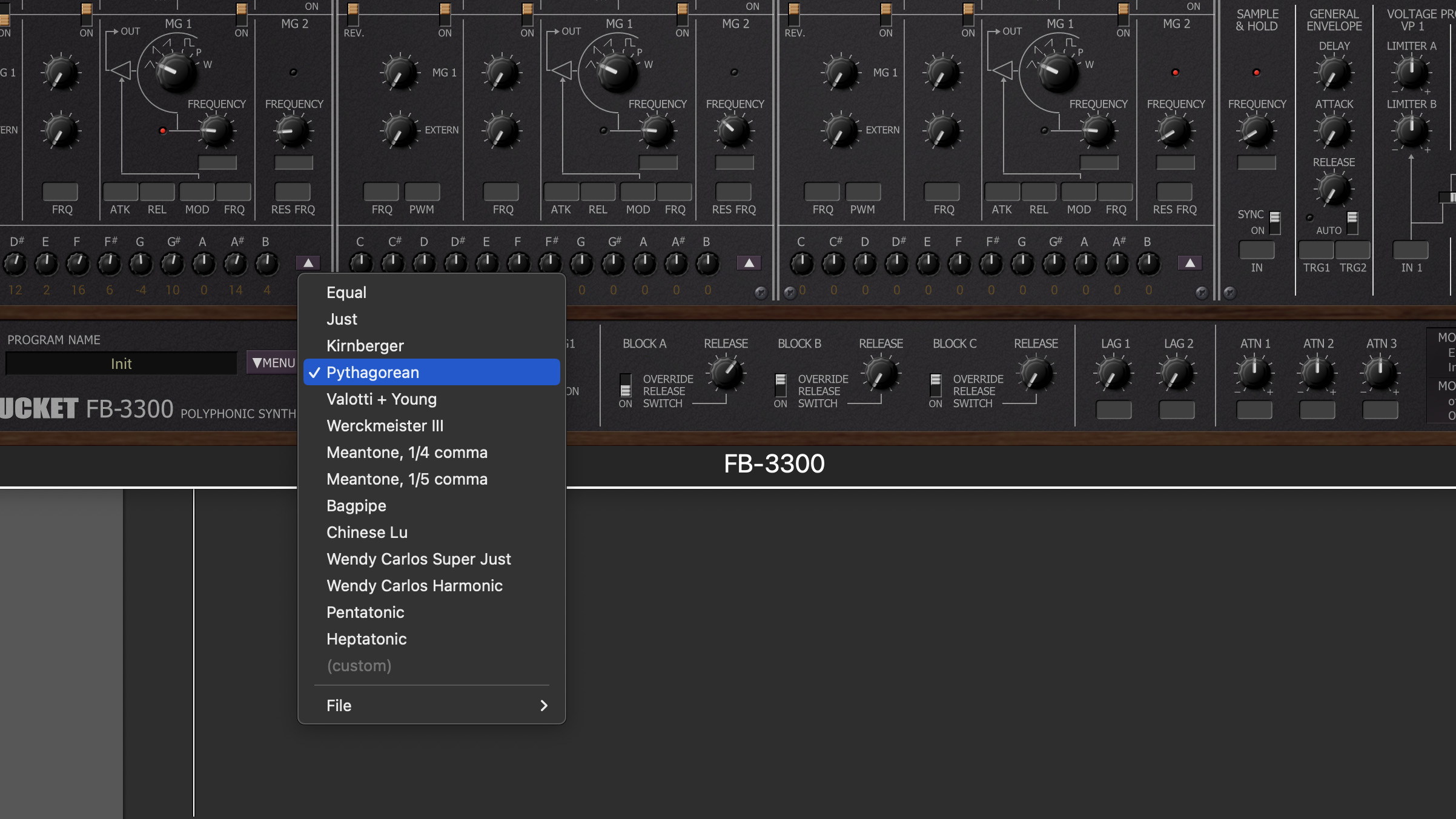
Presets
Although creating sounds in FB-3300 is reasonably straightforward, there are over 50 presets that both showcase its sound and provide an excellent springboard to create your own patches. Presets are accessed via the drop down list in the bottom left and the type of sound (PAD, SFX, KEY and so on) is indicated in the preset naming.
FB-3300 is great for pad sounds, and a number of the presets deliver moving or evolving textures. For a really slow attack sound check out 40 Shimmer in Phase, meanwhile for more movement 00 Waves Of Sin is great. If you want something more pitchy, 47 Thick Pick is a great option, meanwhile for a slow build pulsating sound try 51 Ambient 2.
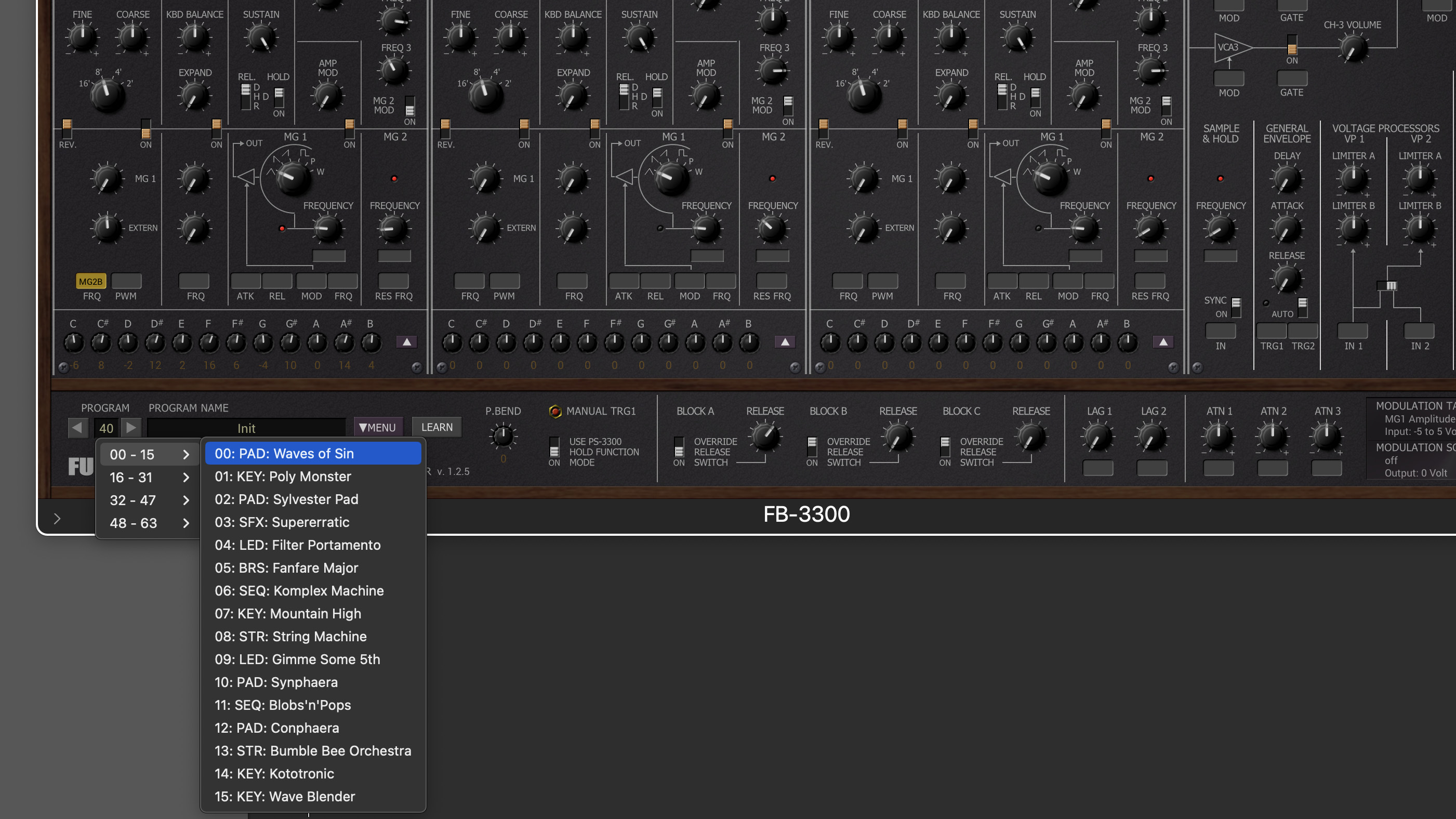
There are also a number of sequenced presets. With no onboard sequencer or arpeggiator these are achieved using the onboard modulators. 16 Go Marching On and 61 Rhythm 01 both use MG1, and by setting each Block to different tempo sync values they achieve the accented sound of a sequence.
In contrast, some of the sequence presets use the global Sample & Hold module with a tempo synced setting. For examples of this check out 11 Blobs n Pops or 57 Rhytmicon 01.
To round off let’s take a look at some of FB-3300’s sound effect presets. These offer a variety of sounds including the typical noise sweep up (27 Launch) and synth zap down (31 Zish). However, most of the presets are a bit more oddball with quite a few random style effects such as 03 Supererratic and 21 Signals from HAL alongside synth style effects such as 26 Multi COMfusion and 41 Subtile Spaces.
And finally...
Although you can download and use FB-3300 completely free, Full Bucket does run a donation option to help support its software. So, if you like what you see and hear why not head over to fullbucket.com.
Jon is a London based platinum award winning mixer, producer, composer and club remixer with a diverse CV that spans dance, pop, rock and music for media. He’s also a long term contributor to MusicRadar's music technology tutorials and reviews. Whether working alone or collaborating he usually handles final mixdowns, so you’ll also find MusicRadar peppered with his handy mixing tips.
You must confirm your public display name before commenting
Please logout and then login again, you will then be prompted to enter your display name.


